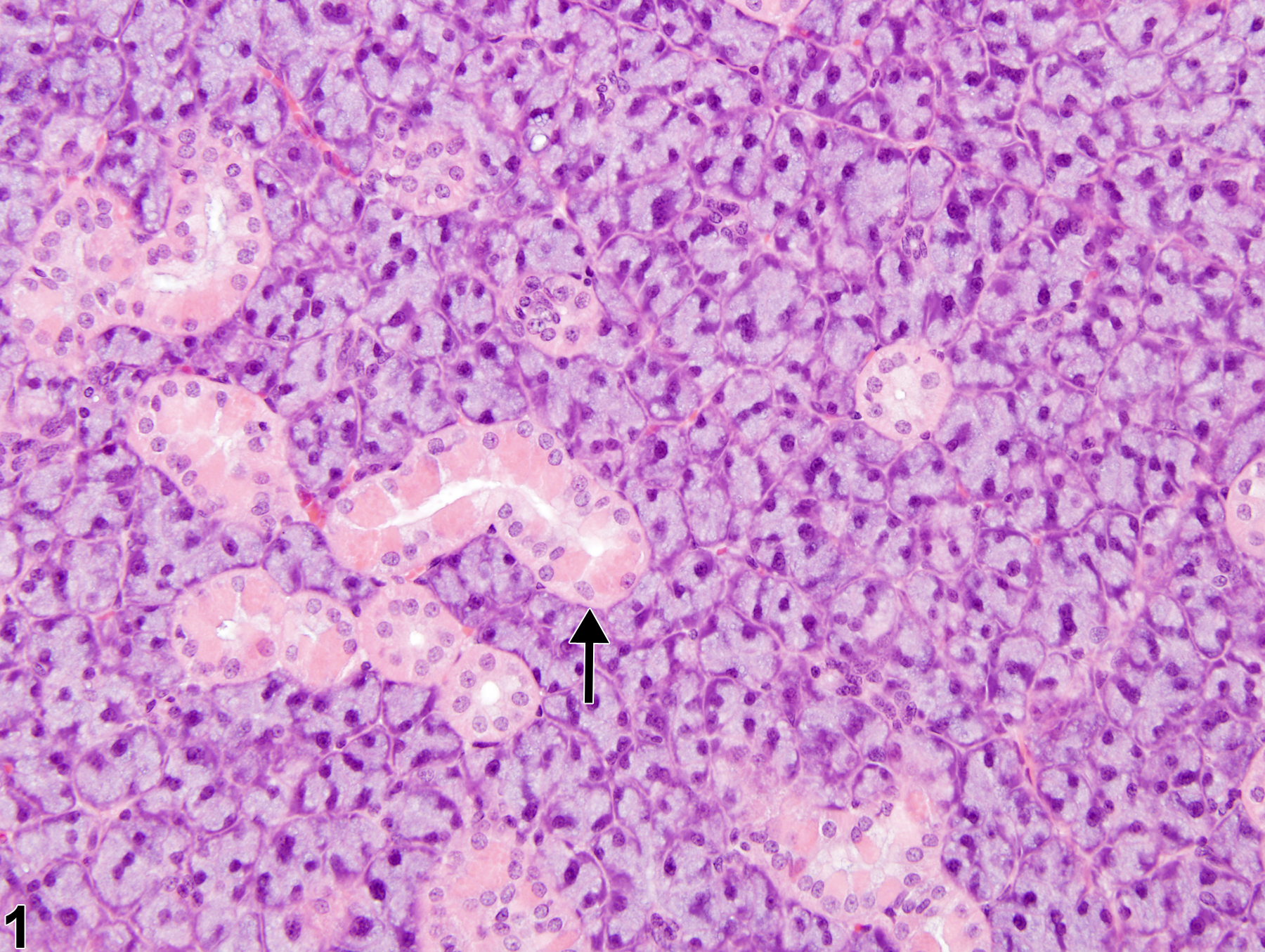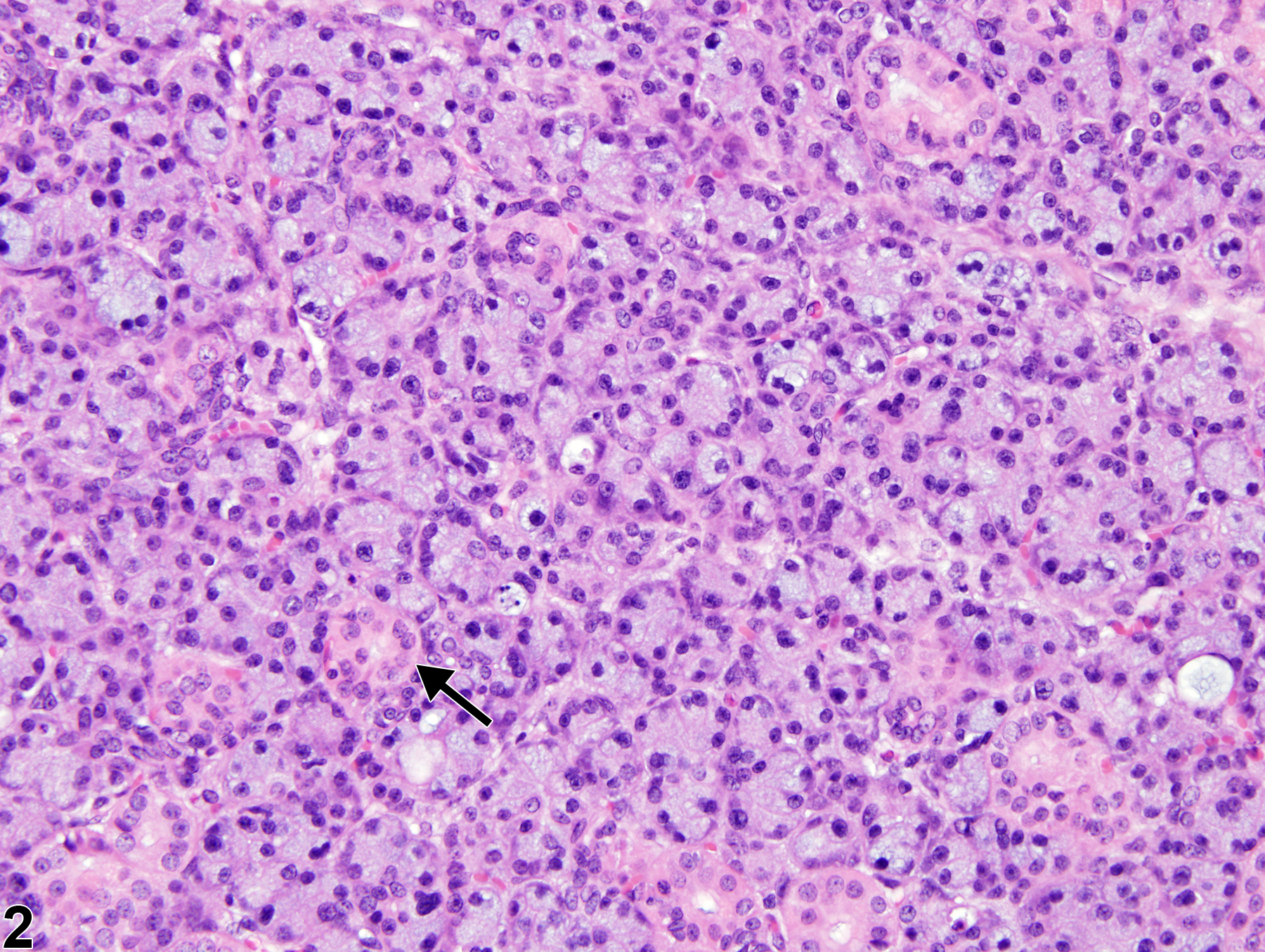Alimentary System
Salivary Gland, Submandibular - Secretory Depletion
Narrative
Botts S, Jokinen M, Gaillard ET, Elwell MR, Mann PC. 1999. Salivary, Harderian, and lacrimal glands. In: Pathology of the Mouse (Maronpot RR, ed). Cache River Press, St Louis, MO, 49-80.
Abstract: http://www.cacheriverpress.com/books/pathmouse.htm
Normal submandibular salivary gland in a female F344/N rat from a subchronic study. The arrow identifies a convoluted duct.



